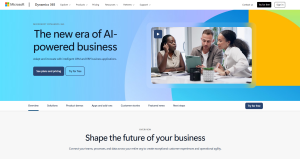Search engines are changing in 2025. If your business still uses the SEO strategy from 2023, you’re losing money right now.
Google’s latest updates show a clear shift: 72% of searches now start with voice commands. Mobile searches make up 63% of all search queries. And artificial intelligence shapes how content ranks.
But here’s what matters: Your competitors are already changing their SEO approach. While you read this, they’re updating their SEO strategies. They’re speaking directly to voice assistants. They’re making their sites faster. They’re creating content that answers exactly what customers ask.
The good news? You can catch up – and even get ahead. This guide breaks down the exact SEO strategies that work in 2025. No complex theories. No outdated advice. Just practical steps that get results.
You’ll learn:
How to rank for voice searches
Ways to make your site faster (Google now demands this)
Content strategies that both search engines and customers love
Methods to turn SEO traffic into actual sales
This isn’t just about ranking higher. It’s about turning those rankings into real business growth. Whether you run a small local shop or manage a large company, these strategies work. They’re tested, proven, and ready for you to use.
The next few minutes will change how you think about SEO strategy. More importantly, they’ll show you exactly how to adapt and succeed in 2025’s search engine optimization landscape.
Let’s start with what’s changing in SEO this year.

27% higher customer satisfaction
Professional delivery features:
- Real-time GPS tracking
- Automated ETA updates
- Delivery confirmation photos
- 27% higher delivery satisfaction
Future SEO Trends 2025: Key Strategies You Need Now
Voice search will grow; optimize for natural talking patterns.
Ensure your site is mobile-friendly to rank higher.
Improve loading speed for a better user experience.
Voice Search Optimization
With voice search gaining popularity, aligning SEO strategies with natural speech search algorithms becomes vital. As people speak differently from how they type, tailoring keywords to this difference is essential. This involves focusing on long-tail keywords and making sure your content captures a conversational tone.
Mobile-First Indexing
Google’s mobile-first indexing means it uses the mobile version of your site for ranking and indexing. This approach is non-negotiable as mobile use surpasses desktop in global web traffic. Ensuring your site adapts smoothly to different screen sizes is key. Responsive design ensures seamless user interaction regardless of device.
Testing mobile-friendliness involves tools like Google’s Mobile-Friendly Test, offering insights on improvements needed. The shift to mobile-first is reflected in companies like IKEA, whose mobile platform makes it easy for users to view and purchase products smoothly.
Core Web Vitals
Core Web Vitis is a set of metrics focused on page loading performance, interactivity, and visual stability. Google emphasizes these as a significant ranking factor inbound links. Faster loading times equate to lower bounce rates, so making the first page impressive is crucial.
Consider Zak, a small e-commerce business that enhanced user experience by refining these vitals. They reduced page loading times, navigating away from clutter, which boosted sales by 20% within six months. Their story reflects both an opportunity and a challenge in balancing design with speed.
While some argue Core Web Vitals constrict creative web design, others believe user satisfaction takes precedence. The right mix of aesthetics, speed, and functionality can be achieved with thoughtful planning.
Effective SEO Strategies 2025 to Elevate Your Business Visibility
Content quality is crucial in driving significant traffic.
A robust strategy requires strong backlinks and local SEO.
Positive user engagement increases authority.
Content Quality and Relevance
High-quality content remains the cornerstone of any effective SEO strategy. Users demand content that directly addresses their needs and offers valuable insights. According to a report by AdLift, 72% of marketers highlight the importance of creating relevant content for SEO. But what does this mean in practice? Focus not only on keyword density or search volume also but on whether the content genuinely helps your audience. Sites with impactful content can achieve traffic boosts up to 10 times compared to those offering generic information.
To truly cater to user needs, continuous refinement of content is essential. This involves a cyclical process of analyzing data and user feedback to understand what resonates and what doesn’t. Tools like Google Analytics and user feedback platforms can help facilitate this cycle, offering insights into content performance.
The argument for quality content is straightforward: better content leads to more trust and authority in the eyes of users and more traffic to search engines. Critics might argue that focusing too much on quality could be time-consuming and expensive. However, the evidence suggests that the long-term benefits outweigh the initial investment. Those interested in digging deeper into effective content strategies should explore online resources like the Conductor Academy’s free courses.
Backlink Strategies for Authority
Backlinks continue to be a vital pillar of SEO. Establishing strong relationships with reputable sites is key to obtaining quality backlinks that enhance credibility and authority. But quantity should never outshine quality in this arena. A single link from a reputable domain with high-quality backlinks can outweigh hundreds from less authoritative sites.
An effective approach is creating content that naturally attracts links, such as a blog post with unique insights or data analysis relevant to your site structure industry. This also involves reaching out and building partnerships with other sites. Conferences and industry events often provide venues to nurture these relationships.
While some dismiss backlink building as outdated, the evidence suggests otherwise. In 2024, organic search engine traffic contributed 33% to overall website traffic in many industries according to a report from Conductor. This underscores the importance of quality backlinks in driving more organic traffic. For those wanting to explore further, SEO blogs and forums often provide community tips and tricks to refine these strategies.
Local SEO Enhancements
For businesses with a physical presence, local SEO is indispensable. Updating and optimizing Google My Business profiles serve as the foundation. This step significantly increases your visibility in local searches. Implementing effective local SEO strategies can distinguish your business from competitors in the vicinity. Focus on localized keyword usage, ensuring your content resonates with community interests while also encouraging customer reviews to enhance your local profile’s trustworthiness. For more detailed tactics to amplify your presence, explore comprehensive insights on local SEO strategies that drive results.
Localized keywords adapt your digital presence to specific geographical areas. Encouraging customer reviews not only boosts your profile’s visibility in Google search results but also builds trust among potential clients.
Skeptics of local SEO often view it as time-consuming. However, the statistics prove its worth, with 57% of local searches performed via mobile devices. Ignoring this tactic is a missed opportunity to capture a significant market segment. Continuing the exploration of local SEO can be done through platforms like LocalU, which offers webinars and resources tailored for local digital marketing.
Increase Business Visibility 2025: Maximize Online Presence
Social media boosts brand value and site traffic.
Videos multiply visibility, and outranking text.
Structured data clarifies content for engines.
Social Media and SEO Integration
Social media now plays a critical role in SEO. High engagement on platforms like Facebook or Instagram can elevate your site’s visibility. While social signals—likes, shares, and comments—aren’t direct ranking factors, they can enhance your website’s authority. When search engines see high engagement, they infer your content is valuable.
To succeed, prioritize two to three social media platforms where your target market spends time. Denise Wakeman suggests, “Focus on a couple of platforms where you like spending time and where you know your ideal client spends time.” This can drive targeted traffic and boost your SEO efforts. Moreover, integrating your social media strategy with your SEO plan increases website traffic and enhances content credibility. Therefore, consider crafting engaging and shareable content that aligns with your brand message on these platforms.
Visual and Video Content Optimization
Video content is poised to dominate the internet, predicted to make up more than 82% of consumer traffic by 2025. Video content is already 50 times more likely to rank organically in search than plain text. Optimizing visuals and videos with the right keywords is an essential strategy. Keywords, when strategically placed in filenames and alt text for images and videos, increase visibility and search relevance.
When creating video content, address common questions in your industry. This not only fulfills user needs but also positions your company as knowledgeable. Video tutorials, webinars, or even brief explainers can create a significant impact. Marketers should invest in high-quality production and clear messaging.
Structured Data Use
Implementing structured data, or schema markup, is vital for enhancing content understanding by search engines. Structured data helps search engines understand context, leading to rich snippets in search results, thus improving click-through rates. Encourage the use of structured data for products, articles, and events to optimize this opportunity.
Schema markup helps bridge the gap between human intention and machine understanding. “SEO 2023: Actionable, Proven Strategies” by Adam Clarke delves into advanced structured data strategies. Some argue that structuring data creates unnecessary complexity. However, the benefits of increased relevance and visibility outweigh the effort involved. Incorporate structured data into your website to facilitate better indexing and ranking on search engines.
Trends in Brand Visibility Metrics
Keeping track of brand visibility is essential. Metrics like website traffic elucidate the success of your online visibility and efforts. Monitoring social media reach and the volume of mentions provides insight into how your brand is perceived. Are people talking about your brand? Understanding these nuances aids in tweaking your strategy for better results.
AI integration in SEO is an exciting trend in 2025. Expect AI tools to improve content quality and traffic. With AI predicted to boost organic search traffic by up to 40%, businesses must explore this avenue. Meanwhile, zero-click searches, intensified by AI, might make brand recognition tougher. As Edwin Romero mentioned, “In 2025, widespread AI adoption and the global rollout of AI overviews will increase zero-click searches, making it harder for brands to build recognition.” Hence, evaluating the pros and cons of AI can refine your approach.
The Role of Mobile-First Indexing and AI
With 60% of global internet traffic coming from mobile devices, a focus on mobile optimization is non-negotiable. Mobile-first indexing impacts how your content appears to users. Prioritizing mobile speeds and ease of use can leverage Google’s indexing shift. Investing in responsive design ensures seamless transitions across devices.
Coupled with mobile-first indexing is the bigger role AI plays in SEO. AI enhances user experience and aligns with user search intent. As Aleyda Solis highlighted, “In 2025, SEOs will shift from search rankings to ensuring brand visibility in AI-generated responses to branded searches.” Diversifying strategies beyond Google, with tools like AI-driven personalization, allows brands to stay ahead.
Focusing on integrating these strategies into business objectives is critical to amplifying online presence. By 2025, it is not just about being seen—it’s about being seen in the right places and contexts.
SEO Sales Conversion Strategies 2025 to Drive Revenue Growth
Optimize key points in the user journey for more sales.
Use data to guide decisions and increase conversions.
Connect SEO efforts directly to stages in the sales funnel.
Enhancing User Journey with SEO
To elevate sales in 2025, enhancing the user journey is crucial. The focus should be on landing page optimization, a significant factor in conversion rates. The average landing page conversion rate currently stands at 4.3%. However, strategic optimization can increase this by as much as 30%. Over 62% of B2B companies already see improved conversion rates through optimized landing web pages. This highlights the importance of investing in this area.
Tailoring content to user preferences using customer data also plays a significant role. When users find content that resonates with their needs, the likelihood of conversion increases. Tools like personalized content libraries or AI-generated recommendations can make content more relevant and appealing to specific audiences. In 2022, personalized content resulted in more successful engagement by reducing bounce rates by substantial margins.
Data-Driven Decision Making
Another strategy involves using data to drive decisions. Analytics platforms help businesses track user behaviors, identify patterns, and adjust strategies. Incorporating A/B testing further refines what’s effective. Successful companies integrate sophisticated tools to analyze traffic and conversion pathways. Many of these tools use AI to improve insights. In 2025, such methods aren’t nice to have; they are essential.
Data-driven strategies often face challenges, particularly from skeptics who worry about privacy and ethical data use. To address this, businesses must adhere to strict ethical guidelines and transparent data practices. This approach not only safeguards user information but also builds consumer trust, an intangible yet crucial factor for long-term brand loyalty.
Alignment of SEO with Sales Funnel
Aligning SEO with the sales funnel involves understanding customer journeys and mapping strategies accordingly. It’s about reaching potential buyers at each stage with targeted content. Theoretically, an optimized funnel sharpens focus on customer conversion pathways, thereby increasing revenue. The challenge lies in translating this into practice.
Unoptimized funnels can disrupt sales goals. If a user can’t easily transition from interest to purchase, they may lose interest, hence affecting conversion rates. It’s essential to optimize and customize content for each funnel stage. Companies are using high-quality content, such as lead magnets and webinars, to transition prospects through stages more effectively. Understanding the right metrics and goals at each stage can improve funnel performance.
The practice of refining the sales funnel sometimes divides opinion among experts. Critics argue that too much focus on stage mapping could make strategies overly rigid. Meanwhile, proponents maintain that targeted approaches maximize resource use. To reconcile these views, it’s important to balance structured funnel planning with adaptable content strategies. A balanced approach ensures resilience in fluctuating markets.
The SEO Predictions for 2025: Staying Ahead in the Changing Landscape
AI tools will refine keyword research and help create content but must be used ethically.
Building E-A-T (Expertise, Authoritativeness, Trustworthiness) is key for credibility.
Optimize for zero-click searches by targeting featured snippets.
Ethical AI and Automation in SEO
AI in SEO can refine keyword research and content creation. Tools like SurferSEO and Clearscope are effective in tracking trends and fine-tuning language for popular queries. However, ethical concerns arise when automation prioritizes shortcuts over quality and human oversight. It’s also important to balance automation with human insight to craft unique and engaging narratives same content that algorithms may overlook.
Penalty risks from search engines are high when AI-generated content lacks authenticity. Major search engines like Google emphasize original content. This mandates a keen focus on maintaining ethical standards. Strategies to maintain ethical AI use include periodic audits of AI processes and integrating AI insights with human creativity to create content that genuinely resonates with users.
Focus on E-A-T (Expertise, Authoritativeness, Trustworthiness)
In 2025, E-A-T continues to serve as a backbone for crafting trustworthy content. Building authorship and establishing a strong digital presence can significantly enhance your site’s reliability. Credentials, affiliations, and professional achievements help communicate the site owners’ expertise and authority, fostering trust among search engines and users alike.
Transparent communication methods, like clear author bios and accessible contact information, contribute to perceived trustworthiness.
Against this, critics argue that overemphasizing E-A-T could stifle creativity, making content feel generic. Therefore, balancing engaging storytelling with factual accuracy is crucial to maintaining credibility while effectively reaching target audiences.
Rise of Zero-Click Searches
Zero-click searches are increasingly common as platforms like Google answer user queries directly within search results. Optimizing these snippets to target related keywords can enhance visibility. This involves creating content that responds to prevalent questions and targeting sections in articles that might appear in search features, like lists or definitions.
To succeed, understand how featured snippets work. You should focus on structured data, and relevant keywords, and format content to answer likely user questions concisely.
The downside is less direct traffic to one page of your website because users may find what they need on the SERP itself. However, capturing snippet spots can establish authority and potentially redirect users back to you for more detailed insights. Balancing between optimizing content for snippet capture and encouraging deeper user engagement on your site is essential.
Examining these elements and others can help navigate the SEO shifts of 2025. Following predictions and thinking creatively about execution can lead you to a strong competitive position in a world of evolving organic search traffic and landscapes.
The Importance of Search Engine Optimization In Your Business
SEO strategy in 2025 demands a shift in mindset. The future of search goes beyond basic keyword research and placement and link building. It’s about creating an experience that serves both users and search engines. To further refine your SEO approach, consider implementing effective strategies in campaign management. These methods are designed to enhance your visibility and drive more traffic to your site, producing tangible results for your business. For more comprehensive insights on this topic, check out our guide on SEO Campaign Management.
The steps are clear: start with voice search engine optimization and mobile-first indexing. Focus on Core Web Vitals to search engine results pages that meet Google’s standards. It is better to build quality content that answers real user questions. Get good backlinks through relationships with other sites. You should make your local SEO strategy strong. Add social media to support your SEO strategy work. Use video and images wisely. Include structured data to help search engines understand your content better.
Remember to connect your SEO strategy work to your sales goals. You should use data to make smart choices. Keep up with AI changes while staying ethical. Build trust through expertise and authority. Be ready for zero-click searches by making your content clear and direct.
Success in 2025 SEO strategy comes from doing these things well and consistently. You can start with one SEO strategy, master it, and then move to the next. Track your search engine results, adjust when needed, and keep learning as search engines evolve. Your business growth depends on taking action today. For those looking to enhance their efforts further, consider exploring effective methods for streamlining your SEO campaigns. This can help you drive even more traffic to your website and ensure that your strategies are aligned with best practices. More insights on this topic can be found in our article on SEO Campaign Management.



























